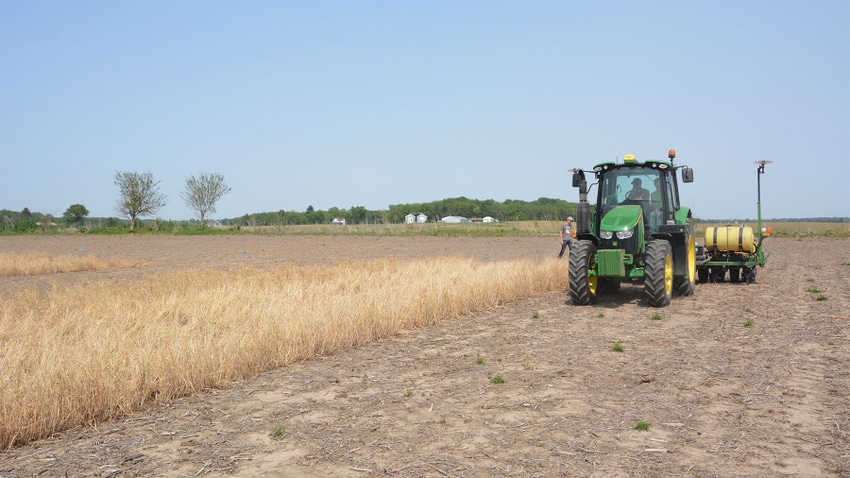February 22, 2024

by Danny Greene and Braden Carpenter
You’ve probably seen the classic bar graph from a side-by-side comparison implying you’re missing out on 3 to 5 bushels per acre by not using the latest and greatest product.
Don’t miss out on a good product, but don’t buy something that simply becomes another row under “expenses” on your profit-loss statement.
Independent agronomists get questions about buying products like starter fertilizer additives and biological growth promoters, or about planning a fungicide pass. Test these things to determine if they hold value. Here are six points to consider:
1.Test on limited acres first. If you’ve never used a product or practice, it makes no economic or agronomic sense to apply it across all your acres. If the product passes the test on 4% of your acres, use it on 40% next year. The test could be strips with and without product, current product vs. new product or head-to-head against a generic. Your agronomist can set this up.
2. Test and measure. You’ve heard someone say, “The crop rushed out of the ground faster with Product X” or “It looked like the grain tank filled up faster.” But did it consistently yield better? Don’t guess. It has never been easier to run an agronomically and statistically sound on-farm trial. Today’s in-cab technology captures exactly where products are placed and at what rates. Today’s analysis tools allow agronomists to help evaluate performance, giving you data-driven, decision-making information for next season.
3. Test on multiple sites to gain confidence. One strip vs. another gives you limited confidence. Ten comparisons show a much clearer picture than one and give insight on the effect of factors like soil type. Work with an unbiased third party to create an intentionally placed, replicated strip or block design trial that makes sense for you. Try different rates or products to yield against check strips.
4. Consider nutrient amounts. Nutrient removal compared to nutrients supplied through a micronutrient application may still deplete your fields. Many packages contain miniscule nutrient concentrations and have a slim chance of satisfying crop needs, even if the nutrient is “more plant-available.” Consider if soil test levels are surplus or deficient. Think about the production you will harvest.
5 .Don’t decide based on a single year. Often, people try a product, rate or practice once and make a decision. However, no two growing seasons are the same. A product or practice may shine in a drought year. But what about a wet year? Multiple years of data add confidence.
6. Choose unbiased help. Trust the advice of someone without a stake in the outcome. Employ a crop adviser who focuses on helping farmers make agronomic data-driven decisions. They are likely working with other growers who have similar questions. Pooling results will build even more confidence.
Don’t settle for side-by-side tests in a brochure. There might be new products or practices perfect for your farm. However, some just never live up to the hype. Build personalized datasets that give you confident answers. Test, and don’t have the same questions next year!
Greene is an Indiana certified crops adviser and co-owner of Greene Crop Consulting Inc., Franklin, Ind. Carpenter is an agronomist with Greene Crop Consulting.
You May Also Like




